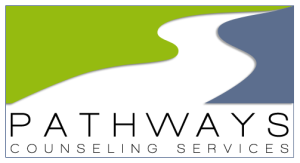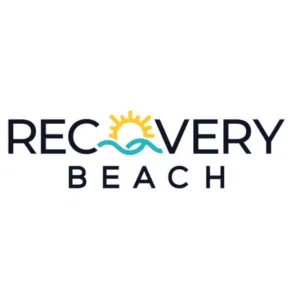If you think we have won the fight against HIV, think about transgender communities. In this post, we shall look at HIV and transgender communities.
Clear-cut, timely data are essential for designing, targeting, and assessing HIV prevention programs. However, since the epidemic struck, there has been narrow worldwide information on the effects of HIV infection among transgender populations.
This is large because there has been no well-grounded system for collecting and distributing both sex and gender identity communication in health records.
Despite the globe’s strategies to cab HIV, there is still a thorn in the flesh in transgender infected people. As such, we cannot pride ourselves as a human race until we address these challenges.
HIV and Transgender Communities – Prevalence
According to Centres for Diseases Control and Prevention (CDC), the risk of HIV transgender people is 49 times more than the general population. With the black transgender women having the highest prevalence.
The Department of Health and Human Services (HHS) further noted that the social and legal rejection and economic susceptibility contribute to the highest prevalence in black transgender women.
Shockingly, black transgender women are at an increased risk of experiencing violence. And to add salt on injury, disempowerment and crushed self-esteem make them less able to negotiate condom use.
Stigma and transphobia around HIV make it difficult for transgender people to access HIV testing and treatment services.
Some of the potential barriers include:
- Discrimination and stigma from medical experts
- Medical professionals who do not know about transgender health or HIV risk
- Unemployment and homelessness
- Discrimination in insurance coverage or healthcare
- Fear of violence if a person were to open up to others that they are transgender or HIV-positive
- Shame or embarrassment about transgender identity
- Mental health issues, including those stemming from discrimination and exclusion
To fill these voids, the CDC has:
- Issued proposal and statistical tools for health departments to gather information on present-day gender identity and report these data to the National Health Security Strategy
(NHSS)
- Informed healthcare providers about the importance of collecting complete data on sex and gender identity
- Sponsored health departments to study behavioral risk factors for HIV, testing behaviors, and the use of prevention services among transgender women
Transgender people are at a higher risk of HIV infection. In addition, they may encounter numerous barriers upon receiving treatment due to health discrimination.
Eliminating these barriers and making interventions and treatments easily accessible can significantly reduce the risk of HIV spreading, therefore, saving lives.
The world needs more targeted prevention approaches combined with increased welfare and employment opportunities to address the specific needs of transgender people.
HIV and Transgender Communities – Risk Factors
CDC suggests that certain risk factors directly connected to transphobia and the marginalization that transgender people encounter contribute to such increased infection rates.
These risk factors include :
- Sex work, incarceration
- Homelessness
- Attempted suicide
- Violence
- Stigma and discrimination
Limited health care access
- Negative health care encounters
- Higher rates of drug and alcohol abuse
- Unemployment
The above list makes them less likely to access services and counseling from mental health counselors.
Unemployment, social exclusion, and economic vulnerability make them turn to sex work as a means of income. That said, a huge percentage, according to research, engage in unprotected sex.
In many settings, the insertive sexual partner often controls condoms, so most transgender women who have sex with men are less able to instigate condom use.
Gender-changing hormones, which most transgender women use, can cause erectile dysfunction, increasing the chances of taking the receptive role during sex.
Subsequently, the trans opt to obtain injectable hormones, the most common form to enhance gender.
Most of them share needles; they are at a higher risk of being HIV infected.
Majorly, since they are living in a society where significant stigma and discrimination against transgender people prevails, they are pushed into situations that greatly increase their HIV risk, and critically limit their capability to obtain comprehensive care once infected.
HIV and Transgender Communities – Prevention
HIV prevention is about observing rules and knowing who you are and when to act to protect yourself and others from getting infected.
It calls for an informed, holistic approach that enables you to roll the dice and understand infection dynamics and ways of prevention.
You can build a fruitful, individualized HIV prevention plan with the preventive measures listed below.
- Use of condoms
- Always use sterile needles
- Avoid sharing razors
- Abstinence
- PrEPs -these are drugs taken to prevent HIV by people with the likelihood of HIV exposure. Studies show that full adherence to this therapy results in no infection.
- Post-Exposure Prophylaxis (PEPs) is a 28-days course of antiretroviral drugs taken within 24 hours of exposure. Research shows that PEP reduces HIV risk by up to 81%
What Needs to Be Done
With the varied HIV prevention needs that transgender people can have, targeted prevention methods that counter specific individuals’ needs significantly reduce HIV infections.
Moreover, prevention actions that empower transgender people and allow them to take the lead in meeting the needs of their community are the most successful.
Inadequate sexual healthcare is among the challenges transgender people face. Additionally, many policymakers and service providers have failed to address the needs of transgender people.
Besides condoms, ART, PEPs, and PrEPS, welfare provision, employment opportunities, and essential services such as mental health counseling play a major role in HIV prevention. Together, these can help address the factors driving transgender people to engage in high-risk sexual behaviors.
Policies
Essentially, policies affecting the lives of transgender people should be gender-affirming, aiming to brace transgender people to live harmoniously with their gender identity.
Health workers, most especially primary care providers and mental health counselors need adequate training to understand and respond to the complex health and rights needs of transgender people.
There is inadequate critical data and limited sponsoring for research about transgender people and the reason behind their vulnerability to HIV.
Governments, researchers, and NGOs need undying effort to team up to find ways to fight HIV among transgender communities. More so in places where their legal rights are not valued.
HIV and Transgender Communities – Wrapping Up
There is a need to develop initiatives in partnership with transgender communities. Moreover, this should link health with advocacy, human rights, and social justice.
The globe must inform transgender people about safer sex ways of protecting themselves from HIV. Although, until their rights are legally protected and valued by society, they will continue to be vulnerable to HIV.
Interventions targeted exclusively on sexual health have not reaped the fruits since they failed to address the social rejection of high-risk behaviors.
Besides protection by law, transgender people need better shelters, a source of income, and education to avoid being driven towards high-risk behavior. They must be able to access transgender-specific health care counselors, healthcare services, in addition to sexual health information that is free from fear of and discrimination.














